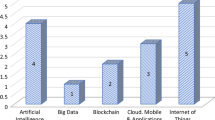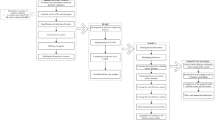Abstract
Maximizing shareholders’ value has always been an indispensable goal for publicly traded companies. Shareholders value is highly dependent on the operating expenses, profit margin, return on investment and the overall performance in public companies. We propose a hybrid fuzzy multi-criteria decision making method for measuring the performance of publicly held companies in the Pharmaceutical industry. The proposed method helps investors choose a proper portfolio of stocks in the presence of environmental turbulence and uncertainties. The proposed method is composed of three distinct but inter-related phases. In the pre-screening phase, a set of financial and non-financial evaluation criteria are selected based on the balanced scorecard (BSC) approach. In the efficiency measurement phase, the DEMATEL method is used first to determine the inter-relationships among the BSC perspectives. A fuzzy ANP method is used next to determine the relative importance of the criteria based on the resulting DEMATEL interactive network. In the third step, two different fuzzy data envelopment analysis (DEA) methods are used to evaluate the relative efficiency of the decision making units (DMUs). The fuzzy DEA models are modified by using the relative importance of the criteria and the precedence relations among the input and output weights as additional constraints. Finally, the modified fuzzy DEA models are used to calculate the relative efficiency scores of the DMUs. In the ranking phase, an integration method grounded in the Shannon’s entropy concept is used to combine different efficiency scores and calculate the final ranking of the DMUs. The method proposed in this study is used to evaluate the performance of publicly held pharmaceutical companies actively trading on the Swiss Stock Exchange (SSE).




Similar content being viewed by others
Notes
The name of the New York investment banking firm and the Swiss pharmaceutical companies are changed to protect their anonymity.
References
Abtahi, A. R., & Khalili-Damghani, K. (2011). Fuzzy data envelopment analysis for measuring agility performance of supply chains. International Journal of Modelling in Operations Management, 1(3), 263–288.
Amado, C. A. F., Santos, S. P., & Marques, P. M. (2012). Integrating the data envelopment analysis and the balanced scorecard approaches for enhanced performance assessment. Omega, 40, 390–403.
Banker, R. D., Charnes, A., & Cooper, W. W. (1984). Some models for estimating technical and scale inefficiencies in data envelopment analysis. Management Science, 30(9), 1078–1092.
Bulgurcu, B. (2012). Application of TOPSIS technique for financial performance evaluation of technology firms in Istanbul Stock Exchange Market. Procedia: Social and Behavioral Sciences, 62, 1033–1040.
Chang, D. Y. (1996). Applications of the extent analysis method on fuzzy AHP. European Journal of Operational Research, 95(3), 649–655.
Charnes, A., Cooper, W. W., & Rhodes, E. (1978). Measuring the efficiency of decision-making units. European Journal Operational Research, 2, 429–444.
Creamer, G., & Freund, Y. (2010). Learning a board balanced scorecard to improve corporate performance. Decision Support Systems, 49(4), 365–385.
Dağdeviren, M., & Yüksel, İ. (2010a). A fuzzy analytic network process (ANP) model for measurement of the sectorial competition level (SCL). Expert Systems with Applications, 37, 1005–1014.
Dağdeviren, M., & Yüksel, İ. (2010b). Using the fuzzy analytic network process (ANP) for balanced scorecard (BSC): A case study for a manufacturing firm. Expert Systems with Applications, 37, 1270–1278.
Dubois, D., & Prade, H. (1980). Fuzzy sets and systems theory and applications. New York: Academic Press.
Eilat, H., Golany, B., & Shtub, A. (2008). R&D project evaluation: An integrated DEA and balanced scorecard approach. Omega, 36(5), 895–912.
Emrouznejad, A., & Amin, G. R. (2009). DEA models for ratio data: Convexity consideration. Applied Mathematical Modelling, 33, 486–498.
Ertuğrul, İ., & Karaşoğlu, N. (2009). Performance evaluation of Turkish cement firms with fuzzy analytic hierarchy process and TOPSIS methods. Expert Systems with Applications, 36, 702–715.
Farrell, M. J. (1957). The measurement of productive efficiency. Journal of the Royal Statistical Society, 120(3), 253–290.
Gabus, A., & Fontela, E. (1972). World problems, an invitation to further thought within the framework of DEMATEL. Geneva: Battelle Geneva Research Centre.
Gabus, A., & Fontela, E. (1973). Perceptions of the world problematic: Communication procedure, communicating with those bearing collective responsibility. Geneva: Battelle Geneva Research Centre.
Guo, P., & Tanaka, H. (2001). Fuzzy DEA: A perceptual evaluation method. Fuzzy Sets and Systems, 119, 149–160.
Halkos, G. E., & Tzeremes, N. G. (2012). Industry performance evaluation with the use of financial ratios: An application of bootstrapped DEA. Expert Systems with Applications, 39, 5872–5880.
Hatami-Marbini, A., Emrouznejad, A., & Tavana, M. (2011). A taxonomy and review of the fuzzy data envelopment analysis literature: Two decades in the making. European Journal of Operational Research, 214(3), 457–472.
Hollingsworth, B., & Smith, P. (2003). Use of ratios in data envelopment analysis. Applied Economics Letters, 10, 733–735.
Jahanshahloo, G. R., Soleimani-damaneh, M., & Nasrabadi, E. (2004). Measure of efficiency in DEA with fuzzy input-output levels: a methodology for assessing, ranking and imposing of weights restrictions. Applied Mathematics and Computation, 156, 175–187.
Kao, H.-Y., Chan, Ch-Y, & Wu, D.-J. (2014). A multi-objective programming method for solving network DEA. Applied Soft Computing, 24, 406–413.
Kaplan, R. S., & Norton, D. (1992). The balanced scorecard measures that drive performance. Harvard Business Review, 70(1), 71–79.
Khalili-Damghani, K., & Abtahi, A. R. (2011). Measuring efficiency of just in time implementation using a fuzzy data envelopment analysis approach: Real case of Iranian dairy industries. International Journal of Advanced Operations Management, 3(3/4), 337–354.
Khalili-Damghani, K., Taghavifard, M., Olfat, L., & Feizi, K. (2011). A hybrid approach based on fuzzy DEA and simulation to measure the efficiency of agility in supply chain: Real case of dairy industry. International Journal of Management Science and Engineering Management, 6, 163–172.
Khalili-Damghani, K., & Taghavifard, M. (2012). A fuzzy two-stage DEA approach for performance measurement: Real case of agility performance in dairy supply chains. International Journal of Applied Decision Sciences, 5(4), 293–317.
Khalili-Damghani, K., Taghavifard, M., Olfat, L., & Feizi, K. (2012). Measuring agility performance in fresh food supply chains: An ordinal two-stage data envelopment analysis. International Journal of Business Performance and Supply Chain Modelling, 4(3/4), 206–231.
Khalili-Damghani, K., & Taghavifard, M. (2013). Sensitivity and stability analysis in two-stage DEA models with fuzzy data. International Journal of Operational Research, 17(1), 1–37.
Khalili-Damghani, K., & Tavana, M. (2013). A new fuzzy network data envelopment analysis model for measuring the performance of agility in supply chains. International Journal of Advanced Manufacturing Technology. doi:10.1007/s00170-013-5021-y.
Khalili-Damghani, K., Sadi-Nezhad, S., & Hosseinzadeh-Lotfi, F. (2014). Imprecise DEA models to assess the agility of supply chains. Supply Chain Management under Fuzziness: Studies in Fuzziness and Soft Computing, 313, 167–198.
Lertworasirikul, S., Fang, S. C., Joines, J. A., & Nuttle, H. L. W. (2003). Fuzzy data envelopment analysis (DEA): A possibility approach. Fuzzy Sets and Systems, 139, 379–394.
Liu, H.-T., & Wang, C.-H. (2010). An advanced quality function deployment model using fuzzy analytic network process. Applied Mathematical Modelling, 34, 3333–3351.
Lin, L. Q., Liu, L., Liu, H. C., & Wang, D. J. (2013). Integrating hierarchical balanced scorecard with fuzzy linguistic for evaluating operating room performance in hospitals. Expert Systems with Applications, 40, 1917–1924.
Liu, S.-T. (2014). Restricting weight flexibility in fuzzy two-stage DEA. Computers & Industrial Engineering, 74, 149–160.
Saaty, T. L. (1977). A scaling method for priorities in hierarchical structures. Journal of Mathematical Psychology, 15, 234–281.
Saaty, T. L. (1980). The analytic hierarchy process. New York: McGraw-Hill.
Saaty, T. L., & Vargas, L. G. (1987). Uncertainty and rank order in the analytic hierarchy Process. European Journal of Operational Research, 32(1), 107–117.
Saaty, T. L. (1996). Decision making with dependence and feedback: The analytic network process. Pittsburgh: RWS Publications.
Sengupta, J. K. (1992). A fuzzy systems approach in data envelopment analysis. Computers & Mathematics with Applications, 24, 259–266.
Sevkli, M., Oztekin, A., Uysal, O., Torlak, G., Turkyilmaz, A., & Delen, D. (2012). Development of a fuzzy ANP based SWOT analysis for the airline industry in Turkey. Expert Systems with Applications, 39, 14–24.
Soleimani-damaneh, M., & Zarpisheh, M. (2009). Shannon’s entropy for combining the efficiency results of different DEA models: Method and application. Expert Systems with Applications, 36, 5146–5150.
Tavana, M., Khalili-Damghani, K., & Abtahi, A. R. (2013a). A hybrid fuzzy group decision support framework for advanced-technology prioritization at NASA. Expert Systems with Applications, 40, 480–491.
Tavana, M., Khalili-Damghani, K., & Sadi-Nezhad, S. (2013b). A fuzzy group data envelopment analysis model for high-technology project selection: A case study at NASA. Computers & Industrial Engineering, 66, 10–23.
Tavana, M., & Khalili-Damghani, K. (2014). A new two-stage Stackelberg fuzzy data envelopment analysis model. Measurement, 53, 277–296.
Tzeng, G. H., Chen, F. H., & Hsu, T. S. (2011). A balanced scorecard approach to establish a performance evaluation and relationship model for hot spring hotels based on a hybrid MCDM model combining DEMATEL and ANP. International Journal of Hospitality Management, 30, 908–932.
Vinodh, S., Anesh-Ramiya, R., & Gautham, S. G. (2011). Application of fuzzy analytic network process for supplier selection in a manufacturing organization. Expert Systems with Applications, 38, 272–280.
Wang, Y. J. (2008). Applying FMCDM to evaluate financial performance of domestic airlines in Taiwan. Expert Systems with Applications, 34, 1837–1845.
Wang, C. H., Lu, I. Y., & Chen, C. B. (2010). Integrating hierarchical balanced scorecard with non-additive fuzzy integral for evaluating high technology firm performance. International Journal of Production Economics, 128, 413–426.
Wang, Y. M., & Chin, K. S. (2011). Fuzzy data envelopment analysis: A fuzzy expected value approach. Expert Systems with Applications, 38, 11678–11685.
Wen, M., & Li, H. (2009). Fuzzy data envelopment analysis (DEA): Model and ranking method. Journal of Computational and Applied Mathematics, 223, 872–878.
Wu, H. Y., Tzeng, G. H., & Chen, Y. H. (2009). A fuzzy MCDM approach for evaluating banking performance based on Balanced Scorecard. Expert Systems with Applications, 36(6), 10135–10147.
Wu, H. Y., Lin, Y. K., & Chang, C. S. (2011). Performance evaluation of extension education centers in universities based on the balanced scorecard. Evaluation and Program Planning, 34(1), 37–50.
Wu, H. Y. (2012). Constructing a strategy map for banking institutions with key performance indicators of the balanced scorecard. Evaluation and Program Planning, 35, 303–320.
Yalcin, N., Bayrakdaoglu, A., & Kahraman, C. (2012). Application of fuzzy multi-criteria decision making methods for financial performance evaluation of Turkish manufacturing industries. Expert Systems with Applications, 39, 350–364.
Zerafatangiz, M., Emrouznejad, A., & Mustafa, A. (2010). Fuzzy assessment of performance of a decision making units using DEA: A non-radial approach. Expert Systems with Applications, 37, 5153–5157.
Zhou, Z., Lui, S., Ma, C., Liu, D., & Liu, W. (2012). Fuzzy data envelopment analysis models with assurance regions: A note. Expert Systems with Applications, 39, 2227–2231.
Acknowledgments
The authors would like to thank the anonymous reviewers and the editor for their insightful comments and suggestions.
Author information
Authors and Affiliations
Corresponding author
Rights and permissions
About this article
Cite this article
Tavana, M., Khalili-Damghani, K. & Rahmatian, R. A hybrid fuzzy MCDM method for measuring the performance of publicly held pharmaceutical companies. Ann Oper Res 226, 589–621 (2015). https://doi.org/10.1007/s10479-014-1738-8
Published:
Issue Date:
DOI: https://doi.org/10.1007/s10479-014-1738-8




